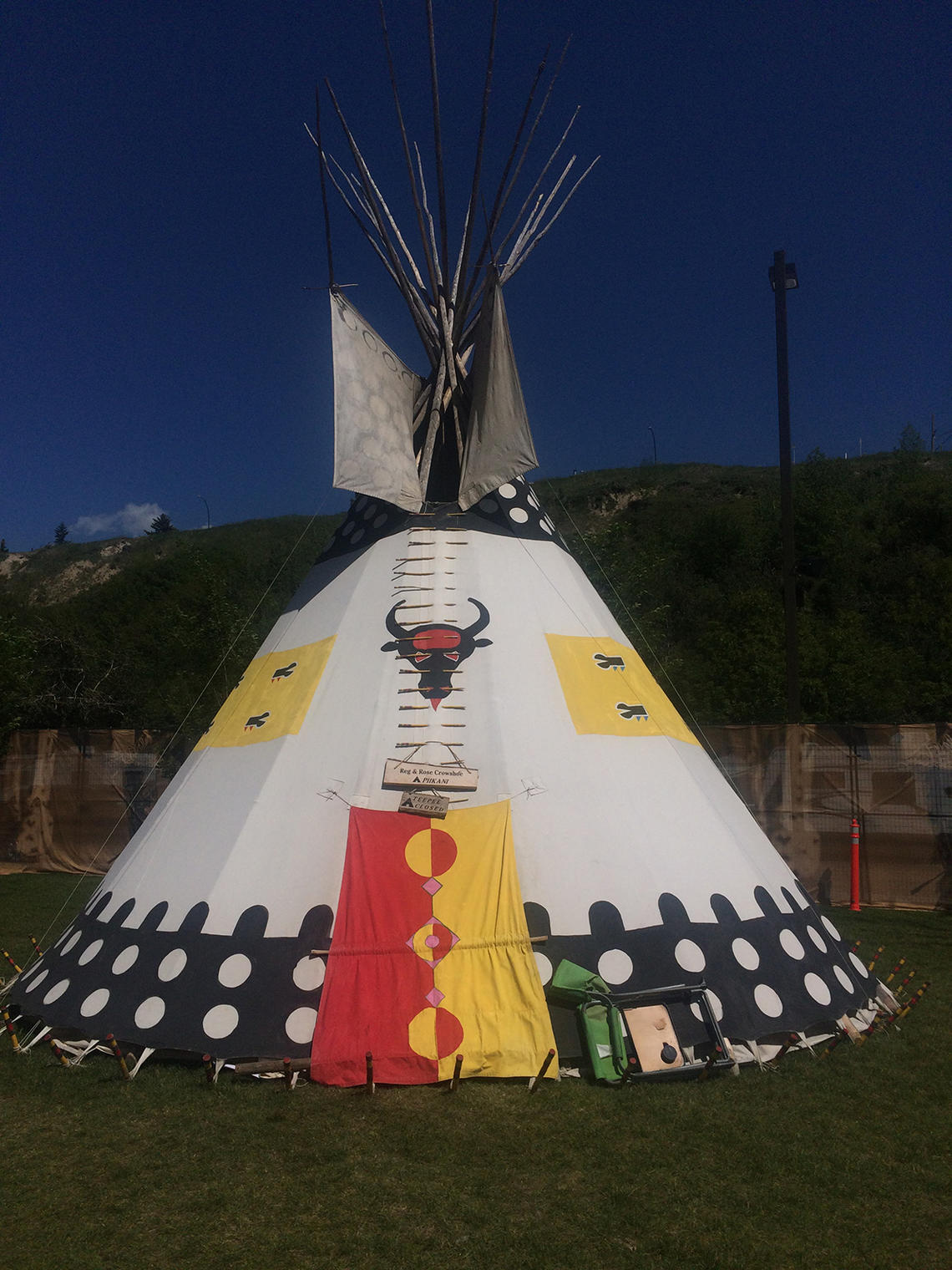July 11, 2018
Elbow River Camp tells historic tale at Calgary Stampede

This week, droves of sugar-fuelled and adrenaline-hungry visitors will be at the Calgary Stampede. But few are aware of the vital cultural history the Stampede holds, specifically within the Elbow River Camp.
To dig deeper, UCalgary connected with its traditional knowledge keeper Piikani Elder Reg Crowshoe, whose family has participated in the camp since it started in 1912.
An oppressive past
After the numbered treaty signings began in Western Canada in 1877, Indigenous Peoples were cordoned off to reserves, restricted from ceremonial and cultural practice, and were not allowed to speak their languages. With enforcement from agents assigned by Indian Affairs, it was not long until the ways of life for the peoples of the Treaty 7 territory were forever changed.
“That’s what we were settled into by 1912,” explains Crowshoe. “We couldn’t practise our culture, so we became prosperous farmers and ranchers, and got rid of our ‘heathen’ way of life.”

Indian Village, 1939.
Calgary Stampede
A vision for cultural exchange
But Guy Weadick, the founder of the Calgary Stampede, had a different plan. Seeing a need for cultural exchange and representation of Indigenous Peoples, he fought against the regulations of the "Indian agents" all the way to Ottawa, until he gained permission from the federal government to ask regional Elders to be involved in the event. Weadick would provide a venue for Indigenous Peoples to practise their traditional cultural ways, and in return, Elders would grant him permission to use the so-called "Indian Village" as a tourist attraction.
“We could do what the reserves would not let us do,” says Crowshoe. “It’s because of that partnership that my family’s tipi was at the first Stampede in 1912, and we’ve upheld that partnership for over 100 years.”

The Crowshoe family tipi, owned by Reg Crowshoe, Elder and Traditional Knowledge Keeper.
Calgary Stampede
Family legacies
Among a variety of significant cultural celebrations including traditional dance, drumming and singing, hand games, meat cutting, and storytelling, tipis are erected for the duration of Stampede, and house more than two dozen Siksika, Kainai, Piikani, Stoney Nakoda and Tsuut’ina families.
Crowshoe’s family tipi design has stayed exactly the same since the first Stampede. Some designs date back hundreds of years, and originate from dreams, visions after long fasting, or accomplishments. Each tipi design has its own unique story, best told by the tipi owner. Tracing back to his great grandfather, the Crowshoe family tipi design is called the ‘four buffalo hoof’ and reflects an oral validation of dreams and songs, which are part of the responsibilities given to the owner of the tipi from Creator.
“The tipi designs are acknowledgements of laws that come from the land to an oral society. That’s why it’s important not to change the design,” he says. “Yes, things have changed. They used to be on hide and now it's canvas, but the design is identical.”
On July 15, 2018, the tipi owners of Indian Village and the Calgary Stampede jointly announced the decision to change the name of Indian Village to Elbow River Camp, effective immediately.
The University of Calgary unveiled its Indigenous Strategy, ii' taa' poh' to' p, on Nov. 16, 2017. The strategy is the result of nearly two years of community dialogue and campus engagement, and involved the work of a number of people from the university, Indigenous communities and community stakeholders. Recommendations from the strategy will be implemented in the coming weeks, months and years as we move forward with promise, hope and caring for the future.

